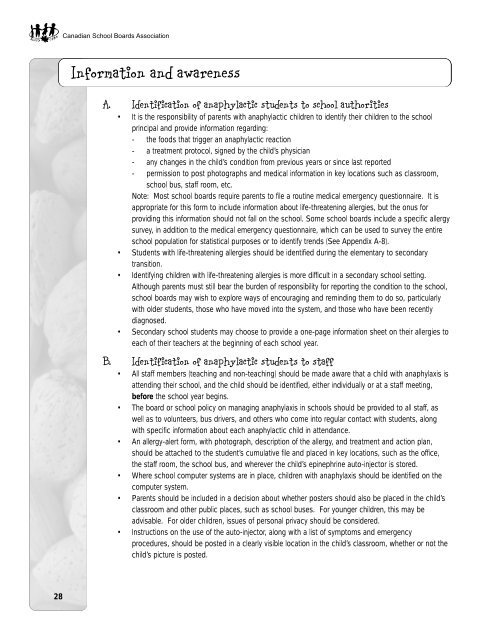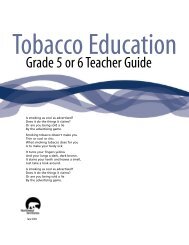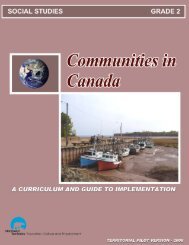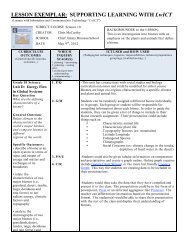Anaphylaxis: A Handbook for School Boards - Education, Culture ...
Anaphylaxis: A Handbook for School Boards - Education, Culture ...
Anaphylaxis: A Handbook for School Boards - Education, Culture ...
Create successful ePaper yourself
Turn your PDF publications into a flip-book with our unique Google optimized e-Paper software.
Canadian <strong>School</strong> <strong>Boards</strong> AssociationIn<strong>for</strong>mation and awarenessA. Identification of anaphylactic students to school authorities• It is the responsibility of parents with anaphylactic children to identify their children to the schoolprincipal and provide in<strong>for</strong>mation regarding:- the foods that trigger an anaphylactic reaction- a treatment protocol, signed by the child’s physician- any changes in the child’s condition from previous years or since last reported- permission to post photographs and medical in<strong>for</strong>mation in key locations such as classroom,school bus, staff room, etc.Note: Most school boards require parents to file a routine medical emergency questionnaire. It isappropriate <strong>for</strong> this <strong>for</strong>m to include in<strong>for</strong>mation about life-threatening allergies, but the onus <strong>for</strong>providing this in<strong>for</strong>mation should not fall on the school. Some school boards include a specific allergysurvey, in addition to the medical emergency questionnaire, which can be used to survey the entireschool population <strong>for</strong> statistical purposes or to identify trends (See Appendix A-8).• Students with life-threatening allergies should be identified during the elementary to secondarytransition.• Identifying children with life-threatening allergies is more difficult in a secondary school setting.Although parents must still bear the burden of responsibility <strong>for</strong> reporting the condition to the school,school boards may wish to explore ways of encouraging and reminding them to do so, particularlywith older students, those who have moved into the system, and those who have been recentlydiagnosed.• Secondary school students may choose to provide a one-page in<strong>for</strong>mation sheet on their allergies toeach of their teachers at the beginning of each school year.B. Identification of anaphylactic students to staff• All staff members (teaching and non-teaching) should be made aware that a child with anaphylaxis isattending their school, and the child should be identified, either individually or at a staff meeting,be<strong>for</strong>e the school year begins.• The board or school policy on managing anaphylaxis in schools should be provided to all staff, aswell as to volunteers, bus drivers, and others who come into regular contact with students, alongwith specific in<strong>for</strong>mation about each anaphylactic child in attendance.• An allergy-alert <strong>for</strong>m, with photograph, description of the allergy, and treatment and action plan,should be attached to the student’s cumulative file and placed in key locations, such as the office,the staff room, the school bus, and wherever the child’s epinephrine auto-injector is stored.• Where school computer systems are in place, children with anaphylaxis should be identified on thecomputer system.• Parents should be included in a decision about whether posters should also be placed in the child’sclassroom and other public places, such as school buses. For younger children, this may beadvisable. For older children, issues of personal privacy should be considered.• Instructions on the use of the auto-injector, along with a list of symptoms and emergencyprocedures, should be posted in a clearly visible location in the child’s classroom, whether or not thechild’s picture is posted.28
















